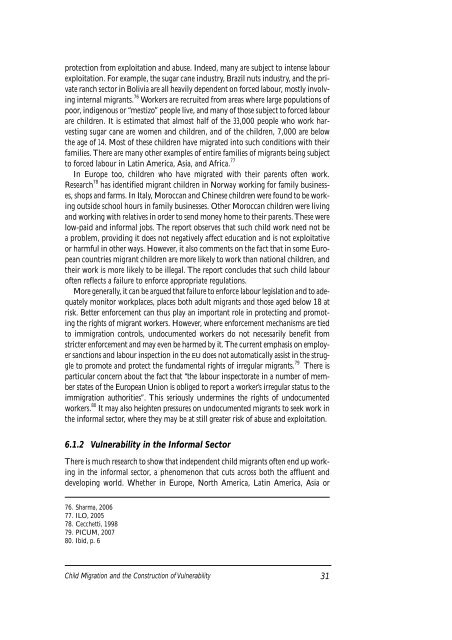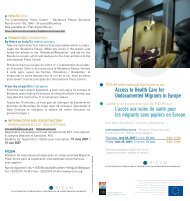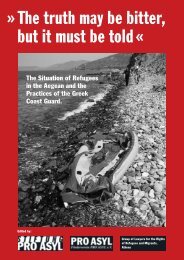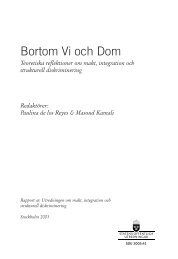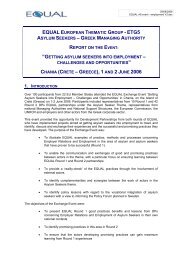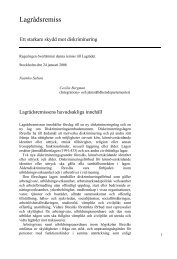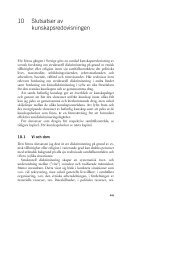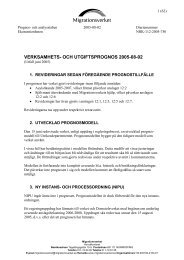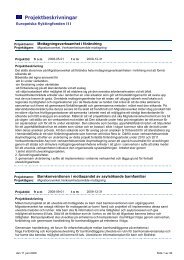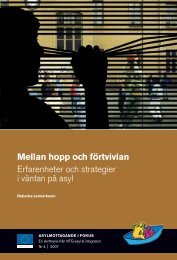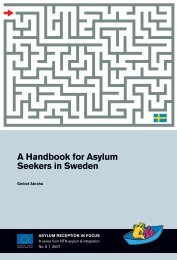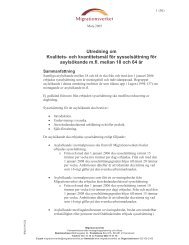and the Construction of Vulnerability - Child Trafficking
and the Construction of Vulnerability - Child Trafficking
and the Construction of Vulnerability - Child Trafficking
Create successful ePaper yourself
Turn your PDF publications into a flip-book with our unique Google optimized e-Paper software.
protection from exploitation <strong>and</strong> abuse. Indeed, many are subject to intense labour<br />
exploitation. For example, <strong>the</strong> sugar cane industry, Brazil nuts industry, <strong>and</strong> <strong>the</strong> private<br />
ranch sector in Bolivia are all heavily dependent on forced labour, mostly involving<br />
internal migrants. 76 Workers are recruited from areas where large populations <strong>of</strong><br />
poor, indigenous or “mestizo” people live, <strong>and</strong> many <strong>of</strong> those subject to forced labour<br />
are children. It is estimated that almost half <strong>of</strong> <strong>the</strong> 33,000 people who work harvesting<br />
sugar cane are women <strong>and</strong> children, <strong>and</strong> <strong>of</strong> <strong>the</strong> children, 7,000 are below<br />
<strong>the</strong> age <strong>of</strong> 14. Most <strong>of</strong> <strong>the</strong>se children have migrated into such conditions with <strong>the</strong>ir<br />
families. There are many o<strong>the</strong>r examples <strong>of</strong> entire families <strong>of</strong> migrants being subject<br />
to forced labour in Latin America, Asia, <strong>and</strong> Africa. 77<br />
In Europe too, children who have migrated with <strong>the</strong>ir parents <strong>of</strong>ten work.<br />
Research 78 has identified migrant children in Norway working for family businesses,<br />
shops <strong>and</strong> farms. In Italy, Moroccan <strong>and</strong> Chinese children were found to be working<br />
outside school hours in family businesses. O<strong>the</strong>r Moroccan children were living<br />
<strong>and</strong> working with relatives in order to send money home to <strong>the</strong>ir parents. These were<br />
low-paid <strong>and</strong> informal jobs. The report observes that such child work need not be<br />
a problem, providing it does not negatively affect education <strong>and</strong> is not exploitative<br />
or harmful in o<strong>the</strong>r ways. However, it also comments on <strong>the</strong> fact that in some European<br />
countries migrant children are more likely to work than national children, <strong>and</strong><br />
<strong>the</strong>ir work is more likely to be illegal. The report concludes that such child labour<br />
<strong>of</strong>ten reflects a failure to enforce appropriate regulations.<br />
More generally, it can be argued that failure to enforce labour legislation <strong>and</strong> to adequately<br />
monitor workplaces, places both adult migrants <strong>and</strong> those aged below 18 at<br />
risk. Better enforcement can thus play an important role in protecting <strong>and</strong> promoting<br />
<strong>the</strong> rights <strong>of</strong> migrant workers. However, where enforcement mechanisms are tied<br />
to immigration controls, undocumented workers do not necessarily benefit from<br />
stricter enforcement <strong>and</strong> may even be harmed by it. The current emphasis on employer<br />
sanctions <strong>and</strong> labour inspection in <strong>the</strong> EU does not automatically assist in <strong>the</strong> struggle<br />
to promote <strong>and</strong> protect <strong>the</strong> fundamental rights <strong>of</strong> irregular migrants. 79<br />
There is<br />
particular concern about <strong>the</strong> fact that “<strong>the</strong> labour inspectorate in a number <strong>of</strong> member<br />
states <strong>of</strong> <strong>the</strong> European Union is obliged to report a worker’s irregular status to <strong>the</strong><br />
immigration authorities”. This seriously undermines <strong>the</strong> rights <strong>of</strong> undocumented<br />
workers. 80 It may also heighten pressures on undocumented migrants to seek work in<br />
<strong>the</strong> informal sector, where <strong>the</strong>y may be at still greater risk <strong>of</strong> abuse <strong>and</strong> exploitation.<br />
6.1.2 <strong>Vulnerability</strong> in <strong>the</strong> Informal Sector<br />
There is much research to show that independent child migrants <strong>of</strong>ten end up working<br />
in <strong>the</strong> informal sector, a phenomenon that cuts across both <strong>the</strong> affluent <strong>and</strong><br />
developing world. Whe<strong>the</strong>r in Europe, North America, Latin America, Asia or<br />
76. Sharma, 2006<br />
77. ILO, 2005<br />
78. Cecchetti, 1998<br />
79. PICUM, 2007<br />
80. Ibid, p. 6<br />
<strong>Child</strong> Migration <strong>and</strong> <strong>the</strong> <strong>Construction</strong> <strong>of</strong> <strong>Vulnerability</strong><br />
31


